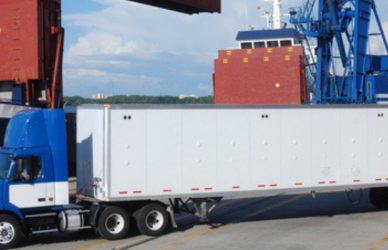For most truckers, the pre-trip inspection may not be the highlight of their day, but it plays a crucial role in ensuring safe and efficient journeys. A daily pre-trip inspection can prevent mechanical failures, help you breeze through DOT inspections, and most importantly, avert accidents caused by equipment malfunctions. So, let’s dive into the importance and details of a comprehensive pre-trip inspection that every trucker should know.
The Value of a Pre-Trip Inspection
Completing a pre-trip inspection starts with filling out a Driver Vehicle Inspection Report (DVIR), indicating that you’ve assessed your vehicle’s roadworthiness. While many drivers now use electronic logs for this purpose, it’s essential to have paper copies available as backup. The Department of Transportation (DOT) mandates the presence of these paper forms during inspections, so it’s wise to stay stocked up.
Inspecting your truck daily establishes a routine that allows you to spot potential issues early. This systematic approach can save you time, hassle, and potentially, lives. Starting under the hood and working your way around the vehicle is a tried-and-true method. It helps you catch issues like flat tires, trailer mix-ups, or malfunctioning lights that could lead to significant delays on the road.
The Pre-Trip Inspection Checklist
The FMCSA provides a comprehensive list of items to observe during your pre-trip inspection. You can download that list HERE.
In the meantime, here’s a high-level overview of what you should check in different parts of your rig:
Under the Hood
- Verify all fluid levels, topping them up if necessary, including windshield washer fluid. Look for any recent leaks beneath your truck.
- Examine hoses, wiring, and lines for cracks, breaks, or excessive rubbing.
- Shake the steering linkage to identify loose connections, worn parts, or excessive play.
- Inspect brakes, shocks, springs, welds, and brake play.
- Check front tires for wear, pressure, and lug nuts.
Tractor
- Ensure all lighting functions properly, including high and low beams, indicator lights, and other illuminations.
- Verify the presence and validity of state, fuel, registration, and other stickers and license plates.
- Confirm the secure condition of steps, cat-walks, mirrors, and windshields.
- Check fuel tanks, caps, and hoses, as well as driveshafts, u-joints, and the frame under the truck.
- Assess drive tires for wear, pressure, and lug nuts, ensuring mudflaps are securely fastened.
- Inspect the fifth wheel plate, ensuring proper greasing and secure coupling if attached to a trailer.
Trailer
- Examine landing gear, ensuring it raises and lowers easily with secure footings and pivot-play on landing plates.
- Check for damage to trailer walls that might compromise integrity.
- Assess the undercarriage for damage, excessive wear, and split welds.
- Inspect brake chambers for damage and brake shoes for wear.
- Ensure secure tandem pins, functioning mechanisms, and sealed air lines.
- Confirm all lighting is functional, including marker lights, running lights, and license plate lights.
- Verify that trailer doors operate correctly, securing mechanisms are functional, and doors are sealed if required.
- If possible, check and secure the load before departure.
The pre-trip inspection is an integral part of a trucker’s daily routine. While the duration may vary between companies and individuals, it’s a critical step in ensuring safety on the road. By practicing these inspections regularly, you’ll become more attuned to your truck’s condition, helping you identify issues before they become major problems. In doing so, you not only ensure your safety but also contribute to the safety of all other drivers sharing the road with you.











